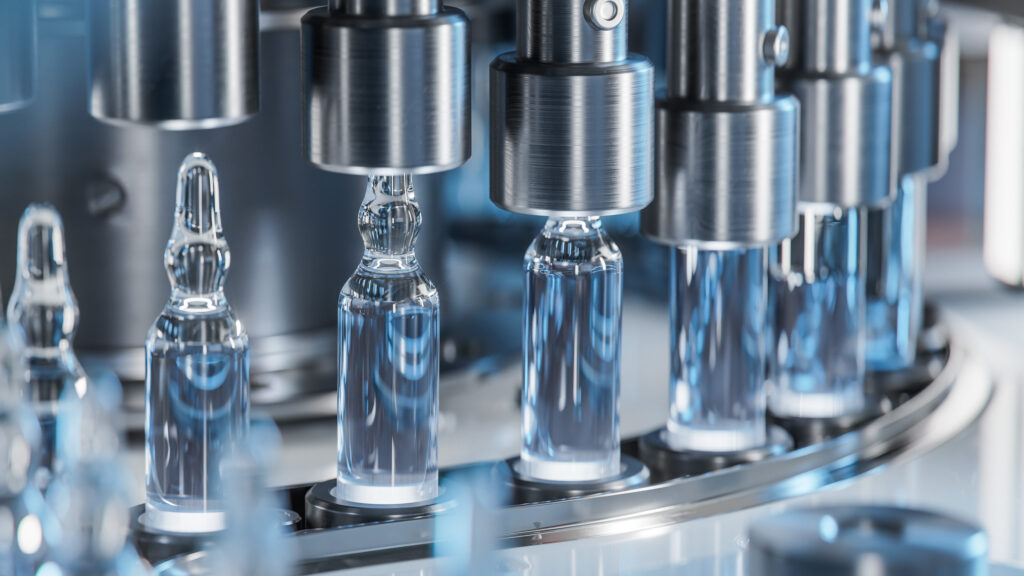Particle Counting – Quality and Compliance
In the pharmaceutical industry, ensuring product quality and compliance with regulatory standards is mandatory, you know the deal now, right?
Particle contamination can have significant implications on your product’s safety and efficacy. This necessitates the use of advanced particle counting technology. This article aims to provide you with comprehensive information regarding these regulatory standards and pharmaceutical procfesses.
Just a gentle reminder… Mirrhia provides you with a solution supporting particle counters called MIRRHIA FACILITY®. Our solution is compliant with the strictest regulation out there.
Understanding Particle Counting in Pharmaceutical Processes
1. Particle Counting and Product Quality Assurance
Particle counting is a crucial, (Yeap, I like that word) aspect of pharmaceutical manufacturing, as it helps identify and control potential sources of contamination. It directly impacts product quality assurance by enabling precise measurement and control of contamination levels.
a. Contamination Prevention
Contamination prevention in pharmaceutical manufacturing is a critical aspect where accurate particle counting emerges as an indispensable tool. It plays a major role in the early identification of potential contamination sources, allowing for immediate and effective intervention. By meticulously tracking and quantifying particulate matter within the production environment, manufacturers can swiftly pinpoint and address issues that, if left unchecked, could lead to product impurities.
Moreover, the implementation of particle counting systems ensures the integrity of the manufacturing process by facilitating the detection of foreign particles that could significantly compromise both the quality and safety of the final pharmaceutical products. This level of vigilance is instrumental in maintaining the high standards expected by regulatory authorities, healthcare professionals, and patients alike, safeguarding against the risks associated with contamination and reinforcing the trust placed in these life-critical products.
b. Batch Consistency
Batch consistency ensures that each product reaching the consumer maintains the same high standards of quality and efficacy. The essence of this consistency lies in the precise control of the particle profile throughout the manufacturing process. Achieving a uniform particle profile is not a mere aspiration but a stringent requirement, as it directly correlates with the uniformity of the final product’s quality.
Accurate particle counting plays a critical role in this aspect, offering a clear and quantifiable measure of the particulate content in each batch. This allows manufacturers to ensure that from the first tablet to the last vial produced, there is minimal variability, and that each unit is a faithful representation of the intended quality.
The benefits of such rigorous adherence to batch-to-batch consistency are manifold, extending beyond regulatory compliance to embody the trust and safety patients place in pharmaceutical products. Through the meticulous application of particle counting technologies, manufacturers can detect and rectify deviations in real-time, thereby preemptively addressing potential quality issues before they escalate. This vigilance in monitoring and control not only streamlines the manufacturing process but also instills confidence in healthcare providers and patients alike that the medication prescribed will perform as expected, each and every time.
In the grander scheme, this commitment to consistency in the face of natural variability is what underpins the industry’s unwavering dedication to quality assurance and patient safety.
2. Particle Counting and Compliance
Regulatory agencies impose strict guidelines on pharmaceutical manufacturing to safeguard public health. Accurate particle counting is a fundamental requirement to meet these standards, ensuring that products meet or exceed the defined quality thresholds.
Beneath this section, you’ll discover a variety of established guidelines with references to particle counting:
FDA Regulations
Title 21 CFR Part 211 (Current Good Manufacturing Practice for Finished Pharmaceuticals):
Within section 211.110, the focus is placed on the critical aspects of sampling and testing in-process materials and drug products, with a specific emphasis on the control of particulate matter contamination. The regulation mandates that procedures must be established and followed to ensure that in-process materials and drug products have the correct identity, strength, quality, and purity by controlling potential particulate contaminants.
It insists on the importance of adequate controls over these processes, including the establishment of scientifically sound and appropriate specifications, standards, sampling plans, and test procedures.
The objective is to detect unacceptable variability in the process or the material, which may be indicative of quality deterioration.
For example, particle counting becomes a vital quality control measure to prevent contamination of drug products with particulate matter that could impact safety, efficacy, or stability. To ensure compliance, pharmaceutical manufacturers must have validated methods and processes in place to monitor particle levels and must investigate any deviations from established standards that may occur during production.
Section 211.160 specifically addresses the general requirements for the laboratory controls used in pharmaceutical manufacturing.
While this section does not explicitly mention particle counting, it sets the broader context for all laboratory testing procedures that would include particle counting as a necessary laboratory activity to ensure drug products meet their quality and purity specifications.
According to this section, the laboratory controls must include scientifically sound test methods designed to assure that raw materials, in-process materials, and finished products conform to established standards of identity, strength, quality, and purity.
Within these controls, if particle counting is a required test method for a particular pharmaceutical product, the section mandates that it must be conducted in accordance with established protocols that have been demonstrated to be accurate, sensitive, specific, and reproducible.
This would involve the calibration and maintenance of equipment, like particle counters, proper documentation of the testing processes, and the implementation of standards ensuring that solutions and reagents used in the testing are prepared and labeled correctly. The section also requires that any deviations from standard operating procedures (SOPs) be recorded and justified, which is crucial for maintaining CGMP compliance in the context of particle counting or any other laboratory test conducted.
Guidance for Industry: Sterile Drug Products Produced by Aseptic Processing — Current Good Manufacturing Practice
Particle counting in cleanroom environments is a critical component emphasized in the FDA’s “Guidance for Industry: Sterile Drug Products Produced by Aseptic Processing — Current Good Manufacturing Practice.”
This guidance stresses the need for comprehensive environmental monitoring programs, which include rigorous particle counting. This ensures that the air quality within clean areas meets the specified cleanliness class, most critically ISO Class 5 for areas where product and critical surfaces are exposed.
The frequency of monitoring should match production operations and be sufficiently frequent to ensure that the cleanroom maintains the required standards. Particle counting is done using instruments capable of detecting particles of 0.5 microns and larger, with immediate action required should particle levels exceed predetermined action limits.
It further outlines that particle counting should be performed under both static and dynamic conditions to truly assess the environment’s quality.
Dynamic conditions—when personnel and equipment are in operation—provide a more representative measure of the particulate challenge faced during production. The collected data must be documented meticulously, reviewed for trends, and used to drive continuous improvement in environmental control.
Settling plates may be used to complement airborne particulate monitoring, but they cannot replace active air sampling methods. This proactive approach to particle counting is crucial for maintaining the sterility of the aseptic processing environment, ultimately ensuring the safety and efficacy of the sterile pharmaceutical products produced.
EMA Regulations
EudraLex – Volume 4: Good Manufacturing Practice (GMP) Guidelines – Annex1:
Annex1, which deals with the manufacture of sterile medicinal products, provides comprehensive guidelines on particle counting as a key aspect of environmental monitoring.
The guidelines stress the importance of maintaining a controlled environment to minimize particle contamination in clean areas, particularly where sterile products are manufactured.
According to Annex 1, routine environmental monitoring should include a particle counting strategy that aligns with the cleanliness grades of the various areas within the manufacturing facility. The clean areas are classified based on the particle concentration limits, and the particle counting must be performed to ensure these limits are not exceeded.
It also specifies the need for continuous monitoring during aseptic processing, using real-time particle counters to detect particles of relevant sizes, typically 0.5 µm and 5 µm. The frequency of monitoring and the limits for particulate contamination are to be established based on the risk assessment, with stricter requirements for higher-grade areas such as Grade A zones.
The results of particle counting should be recorded and reviewed with appropriate actions taken in case of deviations from the established limits. Annex 1 also emphasizes the use of particle counters within Grade A and B areas during both operational (dynamic) and non-operational (at rest) states to comprehensively assess the environmental quality.
Annex1 mandates prompt investigation and rectification in the event of exceedances to prevent contamination of the sterile products, ensuring product quality and patient safety.
If you want to learn more, I invite you to read my article on Annex1.
ISO Standards
ISO 14644 (Cleanrooms and associated controlled environments):
This international standard provides a comprehensive framework for classifying the cleanliness of air in cleanrooms and associated controlled environments, with an emphasis on controlling airborne particulate contamination.
These standards specify the requirements for monitoring and testing to verify the performance of the cleanroom. It sets out the maximum allowable concentrations of particles, of various sizes, for different cleanroom classifications. Regular testing for these particles is essential to ensure ongoing compliance with the specified class of clean environment, which is critical in industries like pharmaceuticals, biotechnology, and electronics where product or process contamination by particulates must be minimized.
The standards delineate a methodology for measuring the concentration of airborne particles, which helps to evaluate the efficiency of air filtration and the overall cleanliness of the controlled environment. This involves selecting appropriate sampling locations, using particle counters that meet the required sensitivity, and conducting tests under specified conditions that reflect operational states for the facility.
Data obtained from particle counting activities must be analyzed to ensure the cleanroom consistently meets the designated classification levels. This analysis can also help identify trends that may indicate a decline in environmental control, thereby enabling corrective actions to be taken before product quality or safety is compromised.
ICH Guidelines
ICH Q7 Good Manufacturing Practice Guide for Active Pharmaceutical Ingredients:
While not specific to particle counting, this guideline touches on the importance of particle counting as it pertains to the quality control of the manufacturing process of active pharmaceutical ingredients (APIs). This guideline underscores the necessity of having appropriate controls and procedures in place to prevent contamination and cross-contamination, which includes controlling particulate matter.
While ICH Q7 does not provide specific particle count limits or detailed procedures for particle counting, it does require manufacturers to establish and follow written procedures that define the cleaning and control of the facility and equipment, especially in areas where APIs are processed.
The guide implies that particle counting, as part of environmental monitoring, is critical to ensure that the manufacturing process is not adversely affected by air quality. It is implicit that the control of the environment where APIs are manufactured should be such that it does not contribute to the contamination of the product.
This includes monitoring of particulates where they may have an impact on product quality. Environmental control also helps in maintaining the integrity and purity of the APIs throughout the manufacturing process, storage, and until they are transported out of the facility. Therefore, while ICH Q7 does not give particle counting specifics, it mandates a controlled environment that, by extension, includes managing particulate contamination.
GMP and GXP Compliance
The alignment of particle counting with Good Manufacturing Practices (GMP) and Good Laboratory Practices (GLP), collectively referred to as GxP principles, is fundamental to maintaining the integrity of environmental monitoring systems within manufacturing and laboratory settings, especially those in the pharmaceutical, biotechnology, and medical device industries.
Particle counting is a critical component of contamination control—a core aspect of GMP. It involves the quantification and sizing of particles in, for example, cleanrooms where the sterility of the environment is paramount.
GMP guidelines necessitate stringent control of environmental parameters, including particulate matter, to minimize the risk of contamination. By ensuring that the particle levels remain within the scientifically established limits, particle counting directly supports the GMP focus on product quality and safety. Regular monitoring and documentation of particle counts not only aid in verifying the cleanliness levels but also contribute to the traceability and accountability aspects of quality assurance.
In addition to supporting GMP, particle counting is also intrinsically linked to the broader spectrum of GxP principles which encompass GLP, Good Clinical Practices (GCP), and others, depending on the specific industry.
These principles are designed to ensure that products are safe, meet their intended use, and adhere to the quality processes which are meticulously documented and auditable. Particle counting data plays a vital role in the data integrity component of GxP.
The process ensures that data is consistently recorded, and that any deviation is promptly identified and addressed, upholding the GxP tenet of data traceability and reliability. For example, in a GLP environment, particle counting supports the reproducibility of conditions under which laboratory studies are conducted, thus fostering the robustness and credibility of the results.
By implementing and following precise, reproducible particle counting procedures, companies underscore their commitment to maintaining GxP standards, thus ensuring regulatory compliance and safeguarding the welfare of consumers and the environment.
3. Patient Safety at the Core
But why make such a fuss about particle counting? Well, you don’t want to get dust, metal or plastic particles in one of your vaccines or products and get someone or everyone really (really, really, really…) sick or worst…
Alright more seriously:
a. Minimizing Health Risks
Patients rely on pharmaceutical products for their well-being, and any compromise in product quality can pose significant health risks. Accurate particle counting plays a pivotal role in minimizing potential health hazards by ensuring that medications are free from harmful contaminants.
Compliance with these regulations is essential for ensuring that pharmaceutical products are safe for patient use. Adhering to particle counting standards helps prevent potential harm from contaminants.
b. Preventing Adverse Reactions
Contaminated products can lead to adverse reactions, ranging from mild allergic responses to severe health complications. Accurate particle counting is a proactive measure to prevent such incidents, safeguarding patient well-being. See?
c. Product integrity
Meeting regulatory requirements for particle counting ensures that products maintain their integrity throughout the manufacturing process, guaranteeing that patients receive medications of the highest quality. We all want that, right?
4. Preventing Costly Recalls and Litigation
a. Avoiding Product Recalls
Product recalls due to contamination can be incredibly costly and damaging to a pharmaceutical company’s reputation. Accurate particle counting serves as a preventive measure, significantly reducing the likelihood of recalls, and associated financial losses.
b. Legal Compliance
Non-compliance with regulatory standards can result in severe consequences, including regulatory action, product recalls, and legal liabilities. Following established guidelines is a fundamental aspect of maintaining compliance.
c. Legal Liability
Contaminated products can lead to legal liabilities and lawsuits. Accurate particle counting acts as a crucial defense, demonstrating due diligence in ensuring product quality and safety.
Alright then, that’s it for today. In my next article, we’ll go through some consideration regarding particle counters and Environmental Monitoring.
See you then !
A question on Particle counter?
Don’t hesitate to contact us now. Send us a message and we’ll get back to you shortly.

Arrival of Etienne Van den Bogaert as Managing Director
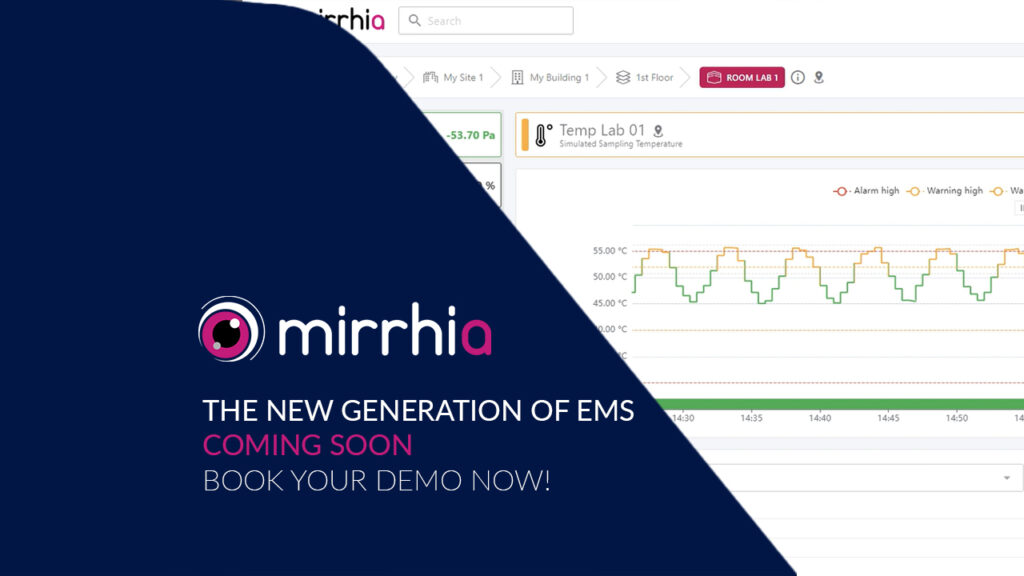
Mirrhia 2.4 is coming

Data Integrity in The Pharmaceutical Industry

Laborama 2024
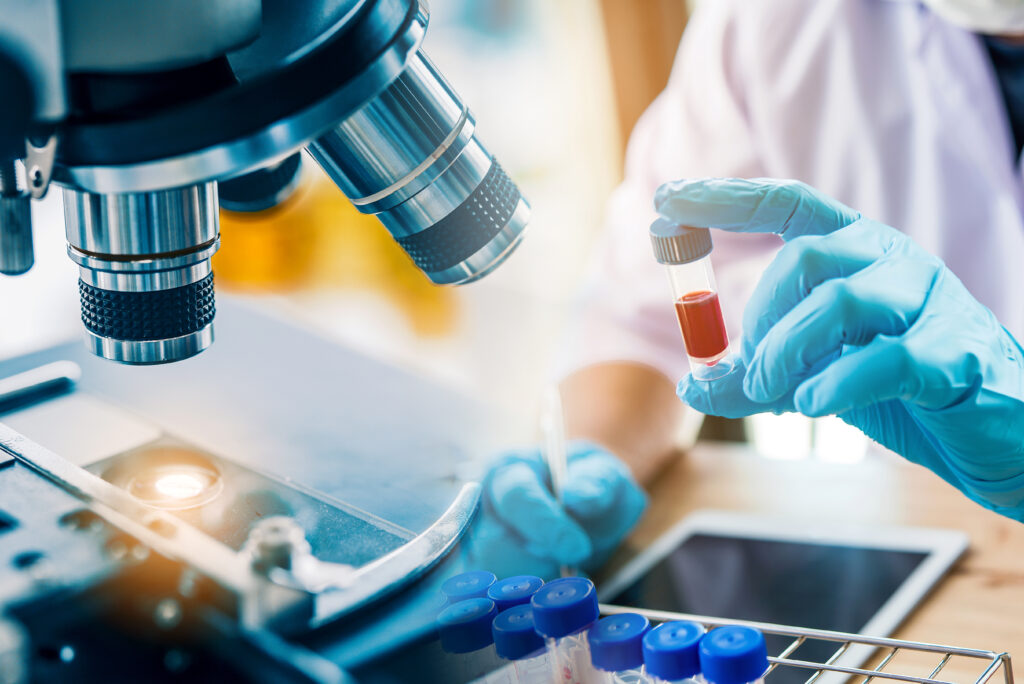
Laboratory Temperature & Humidity Monitoring

Particle Counters | Case Studies & EMS in Pharma
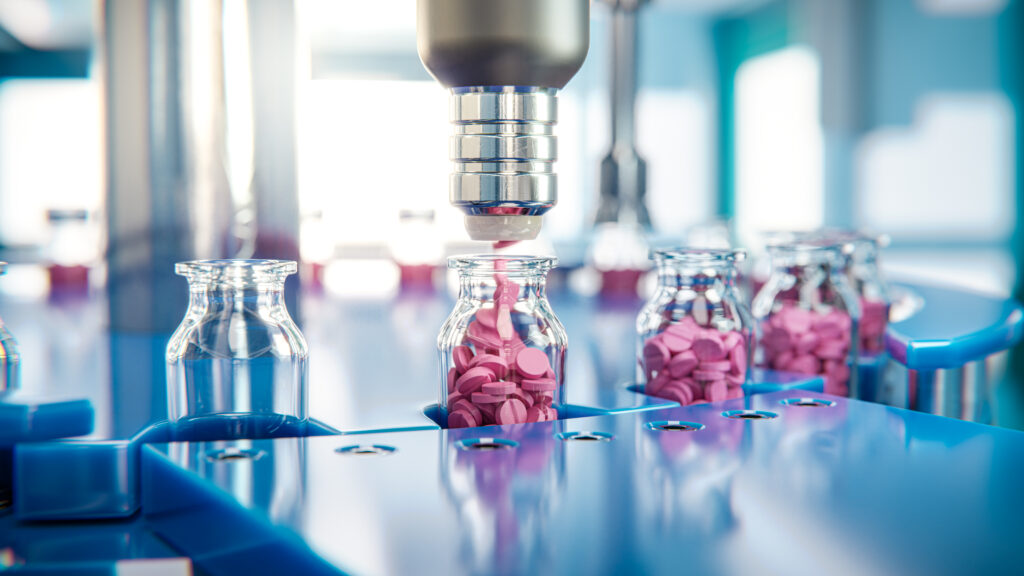
Particle Counting for Pharma
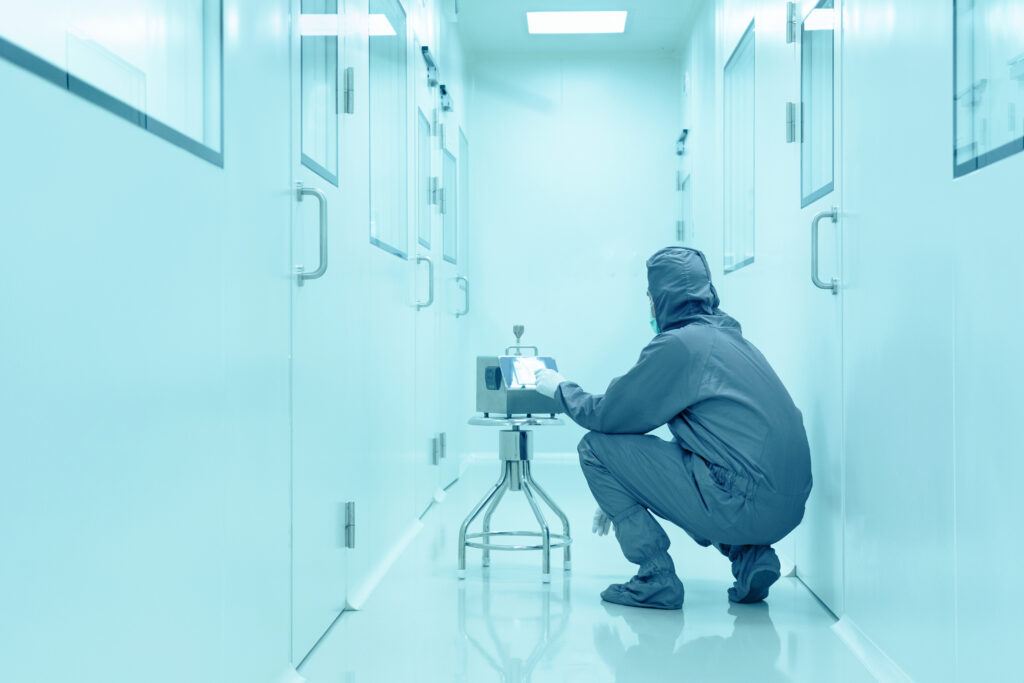
Particle Counters and Environmental Monitoring
